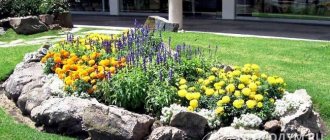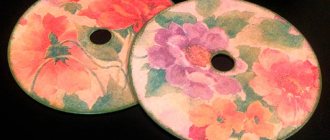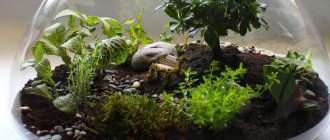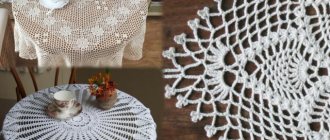It’s rare that a summer cottage, and even more so a garden, does without flower beds. Flowers give us considerable aesthetic pleasure; they delight us with their presence and, attracting our eyes, make us admire them. That is why flowers are permanent residents of garden plots. And they are grown, as a rule, not chaotically, but in flower beds, in beautifully decorated flower beds. At the same time, they are selected according to color, crop varieties and many other factors. And to make flower beds from annuals, the diagrams of which you will find in the article, yourself, you do not need to have the skills of a landscape designer. The main thing is that everything is correct
Rules for creating flower beds
Before you start creating a flower garden on your site, you should familiarize yourself with the basic rules for carrying out the work. They will make it easier to understand the process of arranging flower beds and will allow you to do them not only quickly, but also in the best possible way.
- Never rush. This rule is especially relevant for newcomers to the world of gardening who recently bought a cottage or garden. The fact is that in one season you are unlikely to have time to qualitatively and beautifully arrange all the planned territories. It is best to tackle the most important problems at the beginning of developing a dacha plot and at the same time equip a small, modest flowerbed. Over time, you will be able to cover other areas and plant them with flowers selected according to the color scheme and characteristics of the growing season.
Design of a flower bed of annual flowers
- Before you go to the store for seeds, think about what you want your flower garden to look like. Remember that only a flowerbed that meets all your wishes can become a source of pride, which should first be reflected on paper in the form of a diagram.
- In accordance with the scheme and climatic conditions, select annual flowers that will perfectly match in color and requirements for growing conditions. But beginners should not immediately get involved with capricious cultures. It’s better to start by practicing creating flower beds from unpretentious varieties.
- Remember that the foundation of a flower bed is the plants that cover the soil. They will cover not only the brown soil, but also the stems of taller flowers. In addition, they are excellent soil protectors from moisture evaporation and growing weeds.
- You shouldn’t plant plants one at a time – they always look much better in groups. But too many crops are bad, as it will be inconvenient for them to grow.
- When drawing up a diagram, remember that any flower garden should have its own zest. This could be some kind of central decorative bush, beautifully arranged perennials, annuals that are somehow different from the bulk of the flowers surrounding them and stand out against their background.
Flower garden schemes
Raised bed of petunias and lobelias
Flowerbeds of annuals photo
On a note! Despite the fact that many gardeners choose perennial crops to create flower beds, annuals also do not go out of fashion. They are often unpretentious, easy to grow, and allow you to create completely new and unique compositions every year. In addition, they are very beautiful and bloom with rich, bright flowers, which is their main advantage.
Beautiful flower bed with petunias
Basic landing rules
When choosing mixed vegetable planting schemes, you need to consider several points. Basic Rules:
- “representatives” of one family cannot be placed on the same bed - the only exceptions are bell peppers and eggplants;
- sensitive vegetable crops should not be exposed to direct sunlight, and light-loving plants should not be suppressed by shade;
- eggplants, tomatoes, corn, bell peppers, cucumbers, melons and watermelons cannot be hidden behind the shade of tall plants; they require bright lighting;
- zucchini, parsley, lettuce, carrots, cabbage, garlic and onions “love” the shade.
When mixed successive plantings of vegetables, their ripening period must be taken into account. This makes it possible, after harvesting an early crop, to plant seedlings of another plant in the same soil. Cauliflower with later white cabbage, beets with lettuce, and carrots with parsley are grown in this way.
Potatoes, cucumbers, Chinese cabbage, onions, and chard have an early ripening period. They can be alternated with later beets, pumpkins, eggplants, and tomatoes.
Mixed plantings of vegetables do not cause difficulties for summer residents and gardeners. Taking into account the compatibility of various vegetable crops, it is possible to make maximum use of fertile soil resources, increase plant productivity and improve cultural diversity in the garden.
Rules for choosing planting material and location
One of the first tasks of a gardener when arranging a flower bed is choosing its location. The flowering period will largely depend on this. The place where the flower bed is located should be well lit. It is also worth thinking about the convenience of watering - flowers need regular supplies of water. You should not place the flowerbed behind the house away from a barrel of water or an irrigation system. It makes no sense to plant a flowerbed where no one will see it - flowers were created by nature in order to admire them. So let the flowerbed be in a visible place - at the exit from the house or outside the window, at the entrance to the house.
Flowers should be placed in a visible place
A few more words about the choice of planting material. Be sure to consider color, flowering period, and height. Any flower bed should bloom for as long as possible, and the correct selection of flowers according to their flowering time will help prolong the flower beauty - that is, when the flowering period of some ends, others will replace them.
Number seven 7 made from flowers
Flower beds can be different in shape and height. And each type has its own unwritten design rules. For example, when creating three-tiered flower beds, the tallest plants should be located in the center or in the background. Along the edges there will be lower crops, which will act as a kind of frame. Between these two tiers there will be a second one, which sets the main background for the flower garden.
Amaranth, fragrant tobacco or other plants that bloom all summer are planted in the center of the flower beds.
The number of flowers is calculated approximately like this: central flowers - several pieces or a small patch of fairly tall plants. Crops with an average height are planted in quantities twice as large as the main ones. And the shortest ones will have a population three times greater than that of the main flowers.
DIY mill for the garden
The main function of such a structure is, of course, decorative - a mill on the site pleases the eye and creates an atmosphere of comfort. It is also used to decorate gardens and flower beds in the Old Russian or European style (depending on the appearance of the object itself). Read this article for more details.
It is best not to take more than 3 types of flowers and not create complex compositions when arranging your first flowerbed. In this case, care will be simple and pleasant.
Making a flower bed
Wicker fence
A decorative wicker fence, woven with your own hands, will add originality to the garden and help save money - a fence created by yourself costs absolutely nothing.
It is best to weave a fence from a vine, but you can use other flexible branches left after cutting down trees and bushes. Birch decorative barriers look very expressive. The height of the wicker fence should be approximately 0.4-0.6 meters.
The base of the fence is made from long, thick branches of willow or grapevine. First of all, pegs are placed around the perimeter - in the corners and along the walls. A frame is woven between the pegs to create a fairly dense fence. Very long branches are trimmed. Secure the walls with corner clamps.
Wicker fences for flower beds are ideal for naturalistic and rustic gardens, perfect for decorative flower beds of roses, tall plants, and ornamental grasses.
Types of flower beds
Flowerbeds can have completely different shapes and sizes - it all depends on your wishes and capabilities. They are round and square, figured, triangular.
Flowerbed shapes
There are three main ways to form flower beds.
- Uniform carpet . Typically, this type uses plants of only one species or similar in size but with different petal colors. Such a flowerbed is easy to care for, and it looks very impressive.
- Multi-tiered flower bed . It is created by combining flowers of different heights, but the lowest crops will always be in front. It can be round, corner, wall. Such plantings are more difficult to maintain.
- Flower borders . These are flower beds created along garden paths. They are unpretentious and are usually created from one or two types of plants.
Blooming paradise in your favorite garden
There are also very unusual flower beds that can complement any elements of a summer cottage - for example, decorate the area around a pond, or have the shape of an animal.
An example of an original flowerbed in the shape of a pig
Aesthetics
As the great Faina Ravnevskaya said, “Beauty is a terrible power!” It's hard to disagree with this. We must try to “kill two birds with one stone” - get healthy and necessary products, and please the eye with the beautiful design of the site.
The right design style will help you achieve such harmony: minimalist or French.
Let's talk about the features of these stylistic trends in more detail.
Choosing colors
An important aspect when drawing up a flower bed scheme is the color of plant buds. At the initial stage, it is better to use only 2-3 contrasting shades, and later move on to more complex color transitions and combinations. But even a beginner should understand that color has a significant impact on a person’s psycho-emotional state, so you should choose plants that produce flowers with the shade of petals that you like.
Choosing colors for a garden flowerbed
Table. Colors and their influence on humans.
| Color | Characteristic |
| Yellow | It is usually preferred by joyful and active people; it is the color of a good mood. And it will give confidence to a shy person. In the garden, this color will be given by lilies, marigolds, calendula, snapdragons, daylilies, cinquefoil, and rudebeckia. |
| Pink | Improves mood, relieves sad thoughts. Meadowsweet, cosmos, petunia, carnation, daisy will give this color in the flowerbed. |
| Blue | Calms, comforts, relieves stress. Iris, lavender, forget-me-not, delphinium - flowers with blue petals. |
| Red | The color of energy, strength, optimism, passion. Carnation, primrose, rhododendron will give it to you. |
| Violet | A color that improves your emotional state and has a positive effect on the functioning of the immune system. These are lilacs, violets, speedwell, pansies, and aster. |
| Orange | A color that gives self-confidence and lifts your spirits. These are chrysanthemum, marigolds, cinquefoil, and gravilate. |
Flowerbed of petunias and marigolds
Yellow flowers for a flower bed
On a note! Variegated flower beds can always be slightly diluted with white flowers. They will add zest to the plantings. And in order to choose colors that combine with each other, use the color wheel.
Monastery courtyard
Proponents of minimalism choose simple, clear geometric shapes to decorate their garden. For such people, a rectangular garden layout is perfect.
Straight lines combine beautifully with geometric shapes, and cobblestone paths not only attract the eye with their simple beauty, but also provide convenient access to the beds.
Note!
Trellis for grapes? do it yourself - ready-made solutions for the garden plot. Instructions + 120 photos of options for the correct trellis
- The best ideas for a summer cottage: 110 photos of exclusive ideas and new products in landscape design at a summer cottage
House for a well: a step-by-step master class on how to make it yourself, recommendations from craftsmen with simple work patterns
Another advantage of the ascetic design is that there is room for a small pond, miniature benches and low-growing bushes.
Selection of types of flowers
Creating a beautiful flower bed is a creative process that can completely absorb any gardener. This is a great way to realize your potential as a creator. By choosing the right plants for your flower beds, you can create a real living work of art on your site.
Making a flower garden from annuals
Scheme of a triangular flower bed
A huge number of seeds of all kinds of flowering plants are now sold on store shelves. Which ones are best suited for creating flower beds? First of all, focus on the growth and flowering period of plants, as well as the color of their petals.
Table. The most popular types of flower plants for flower beds .
| Name | Flowering period | Height, cm |
| Lobelia | June-September | About 15 |
| Ageratum | July-October | 15-70 |
| Iberis | June-October | Up to 40 |
| Marigold | June-September | 15-100 |
| Nasturtium | June-October | Creeping up to 400, bush 50 |
| Petunia | June-mid October | 15-80 |
| Zinnia | June-October | 20-70 |
Also, low-growing annuals include: dwarf begonia, viola, lobularia, dwarf aster; for tall ones: lupine, peony, astilbe.
raised flower bed
Prices for annual seeds
annual seeds
Fencing made of large stones, boulders, concrete
Large natural stones are often used to decorate rocky gardens and flower beds. Large boulders look incredibly beautiful when enclosing a flower bed with tall flowers. Flowerbeds made of stones are easy to make yourself; they look very colorful.
The strongest and most resistant stone and concrete fences, they will last much longer than wood or plastic. They have excellent wear resistance and do not require constant maintenance. Concrete is a fairly durable material, excellent for creating edging in the form of low walls, strips that are flush with the ground.
Flower schemes
To make it easier to navigate when creating your own scheme, we suggest that you familiarize yourself with several simple but beautiful ready-made options.
Table. Flower bed schemes.
| Scheme, photo | Description |
| Scheme No. 1 | 1 – annual stock roses of three colors (white, red, yellow); 2 – decorative sunflower; 3 – Spanish poppy; 5 – cardinal lobelia; 6, 7, 8 – bell, catnip; 10 – sedum. The remaining flowers can be selected in accordance with the color indicated in the diagram. |
| Scheme No. 2 | Flowerbed cake: 1 – low red flowers; 2 – white or silver flowers; 3 – medium-sized plants with red flowers; 4 and 5 – high background crops. |
| Scheme No. 3 | Round flowerbed: 1 – cannas; 2 – begonia; 3 – petunia; 4 – snapdragon; 5 – marigolds; 6 – alyssum; 7 – ageratum; 8 – pyrethrum. |
Scheme No. 4 | 1 – amaranth; 2 – zinnia; 3 – garden quinoa; 4 – chard; 5 – basil; 6 – nasturtium. |
Scheme of a flower bed of shade-tolerant annuals
Planting flowers by sector
Scheme of a round flower bed of tulips, daffodils, hyacinths, scilla and mouse hyacinth
Flowerbed of bulbous plants - diagram
French charm
Would you like to have something similar to the design of the royal Versailles from the time of the Sun King? Then you’ll have to start arranging your site in the French style!
It should be remembered that you will have to determine the central part of the composition, from which triangular beds will extend, forming a hemisphere or semicircle. Symmetry must be observed when designing each element.
More detailed information on how to plan an exquisite vegetable garden can be easily found on the Internet. We will list those elements that will decorate a suburban area in general, and a vegetable garden in particular:
- decorative borders of paved paths;
- miniature fountain;
- curly (topiary) bush trimming;
- garden sculptures.
Important! Low-growing shrubs are suitable for such a garden. They should not “obstruct” the view, and from time to time they “demand” a fashionable “hairstyle”.
Note!
- Do-it-yourself canopy over the porch - choice of materials, types of structures + instructions for making it yourself
- Do-it-yourself bathhouse in the country: expert recommendations, choice of materials, step-by-step description + instructions for DIY construction
- How to sew outdoor curtains for a gazebo with your own hands: step-by-step instructions + 140 photos of ready-made ideas
We create a flower garden with our own hands
Let's look at the creation of a flower bed step by step using the example of such a wonderful flowering corner.
DIY flowerbed
Step 1. Create an exact diagram of the future flower garden in accordance with your capabilities and wishes. Don’t just try to design large flower beds - it’s better to make one small and neat than a large one that you won’t have enough strength for. The best option to start with is a flower bed with 25-30 plants.
Step 2. Choose a sunny place on your summer cottage. Step back about 1 m from the fence. To prevent the sun from damaging the plants, place the flower bed on the eastern side of the fence or buildings. Mark the border of the flower bed.
Choosing a suitable location on the site
Step 3. Remove all debris from the site, dig up the soil, and apply fertilizer if necessary. Weed out all the weeds.
Digging the soil
Step 4. Level the surface of the soil, break up the earthen clods.
Leveling the soil
Step 5. Purchase flower seedlings or use ones you grew. Plant tall crops in the far corner, then medium-sized crops, and place low-growing crops along the edge of the flowerbed. In this case, holes for all flowers can be dug in advance.
Planting flower seedlings
On a note! Be sure to consider the size of an adult plant when planting. It is important that over time the flowers do not press on each other, but there are no large gaps between them.
Step 6. Take good care of the flowerbed - regularly water the flowers, remove wilted ones, fertilize.
Watering flowers
This way you can arrange a corner flowerbed on your site. With a round one you will have to work harder. The fact is that its edges must form a perfectly smooth circle, otherwise it will appear crooked. But achieving an excellent result is quite simple: a stick is dug into the center of the flower bed, and a rope equal to the radius of the flower bed is tied to it. Moving the rope in a circle, outline the boundaries of the flowerbed with sand. And so that the plants “fall” into place, you can make a preliminary sketch inside the circle with sand, outlining where the holes for each flower will be marked.
Begonia everblooming in a flowerbed
Gardeners whose plots do not allow them to set up a whole garden can get out of the situation by creating flower borders along the edges of the paths. They look very beautiful, especially if they are made from flowers of the same type.
Workbed of several types of plants
Work in landscape design
And finally, some tips for arranging flower beds.
- Do not forget to leave gaps of about 10-15 cm between plants planted in the ground. This is necessary for optimal development of crops.
- Do not place the flower garden in a low area, especially if it rains often in your region. Otherwise, the soil under the flowerbed will be too damp and the flowers will begin to hurt.
Scheme for creating a round flower bed
Gravel garden - well-groomed flower beds without constant worries
Do-it-yourself vertical flower beds - a magnificent decoration for a summer house
Creating a flower garden with your own hands, following the diagram, is not so difficult, and you have seen this personally. The main thing is not to rush and think through everything carefully, then planting will definitely go like clockwork, and you will enjoy the beautiful flower beds in your garden all summer.
Video - Continuous flowering beds of annuals
Neighborhood Rules
Planning a garden in a small area will help to compactly place plants and get a high yield. If you choose the right neighbors in the garden bed in landscape design, then joint cultivation will be beneficial. Successful companions are able to minimize damage from pests and insects.
Bush beans repel Colorado beetles from eggplants and flea beetles from cabbage. It is better to place beans around beds with cucumbers, potatoes and corn. Small islands of weaving crops improve the nitrogen supply of the garden. Peas are the perfect companion for carrots and turnips. The taste of the wormwood and marigold family spoils the taste.
Correct layout of the vegetable garden Source www.benimmulku.com/view.htm
Potatoes are safe to grow in mixed beds. Horseradish, tansy and nasturtium repel insects. The combination with spinach and beans drives away Colorado potato beetles. Celery inhibits root growth and is therefore prohibited for joint cultivation.
Parsley between rows of strawberries will repel slugs. Garden berries in the garden harmoniously coexist with all vegetables. Sage and borage improve the taste of the harvest. Garlic gets along without problems in a garden bed with strawberries, but will not survive next to grapes. Peas are recommended for turnips, but mustard and knotweed are prohibited. Tomatoes may die near kohlrabi.
Table of successful neighbors in garden beds Source eda-land.ru
Corn is very demanding of its surroundings and will not tolerate all types. Beets and celery are also contraindicated. At home, in Latin America, the plant is grown together with pumpkin and beans. Companions support each other throughout the entire development period. Pepper gets along perfectly with basil, but will die in alliance with fennel.
Neighbors in the garden Source www.pinterest.com
Rules for the location of beds
To get the maximum harvest, you need to properly arrange your garden at your dacha, and for this you must adhere to the following rules:
- choose the sunniest place - all vegetable crops love warmth and the rays of daylight;
- Before sowing or planting, the soil should be leveled;
- if the soil has a slope, then plants should be planted across it (slope), thereby increasing the efficiency of irrigation;
- try to keep the beds the same length (three to four meters) and width (up to 45 centimeters).
Important! Symmetry always improves visual perception and allows for free access to the cultivated area. Do not arrange beds between fruit trees under any circumstances - the shade will not allow you to get a good harvest, and besides, the chemicals that are used to treat the fruit trees may get into the vegetables!
tall plants
Interesting options with a height of up to 80 cm are:
- Gladioli;
- Geranium;
- Astilbe;
- Delphinium;
- Daisies.
The choice depends on the level of illumination of the area. Chamomiles prefer an abundance of light, Delphinium and Geranium are unpretentious, and Gladioli and Astilbe love shade. Optimal specimens are determined individually.











